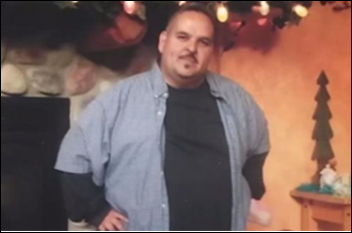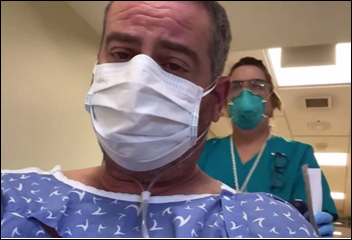Philip Meer, MBA is CEO of PatientKeeper of Waltham, MA.

Tell me about yourself and the company.
I grew up in New Jersey. I’ve spent my entire career leveraging software to advance a greater good. I’m an operator by trade. I enjoy solving problems and tinkering, using operations and using software to ultimately improve the quality of human life, but more tactically, to help companies scale their operations and make things better, faster, and cheaper, ultimately benefiting the end customer.
PatientKeeper is a 20-year-old software company whose mission is advancing healthcare by creating instinctive, empowering technology that respects the importance of the physician. I joined PatientKeeper because we can solve the big healthcare problem of providing a better clinical experience for the physician, who is at the core of what we do.
As an operator and tinkerer, it must be either terrifying or exhilarating to see healthcare and technology throwing out the rules and trying new ideas in response to the pandemic.
I think you said it very well — terrifying and exhilarating. What’s terrifying to me about the pandemic is that the healthcare IT and software community has not fully grasped the size, scale, and scope of the pandemic. It’s just now, a couple of months in, that we are advancing real solutions to support the healthcare ecosystem. It is terrifying because it took us by surprise. I’m not sure what we could have done differently, but it is terrifying to see the scale of a pandemic and what it can do to our healthcare system.
What’s exhilarating is that healthcare was already undertaking new strategies. Telehealth and home care allow mobility and enable the provider to provide care wherever they are, under whatever circumstances come their way. I’m proud as an operator that we are deploying software in these areas that the healthcare community had begun to embrace pre-COVID and now have accelerated with the pandemic.
What have we learned from moving physicians out of their specialties, and in some cases out of retirement, and placing them on the COVID front lines in new hospitals that have unfamiliar technologies and workflows?
The primary learning is that the new norm is mobility — the ability for a provider to render care, collaborate with the care team, and to reach patients and family members in an ergonomic way. Collaboration, both inside and outside the four walls of the hospital, must be a strategy when it comes to healthcare technology.
EHRs are great systems of record, as they were designed to be. But we have learned that the imperative is a system of experience, in which a clinician can provide care and also ergonomically tackle their administrative and data entry responsibilities in a way that minimizes their burden. Mobility and ergonomic systems that support physician productivity are no longer nice to have — they must be at the forefront of healthcare as we look beyond the pandemic.
How will increased use of telehealth and remote monitoring and the resulting changes in clinical collaboration change the demand for technology?
There’s a growing need to have, at your fingertips, a workflow tool or a system of experience where you can do your job in a way that doesn’t sacrifice the interpersonal care that is needed. That is the jigsaw puzzle that we are all being asked to solve right now as software engineers and technologists. That is the puzzle that PatientKeeper is being faced with.
How do you do clinical documentation without sitting at a dumb terminal by a patient’s bedside? How do you capture the work you’re doing from a billing perspective by quickly speaking or typing into your mobile device from the golf course or working from home? How do you view lab results, x-rays, and lab results virtually and be able to take actions to support your patient? No question about it, the ability to deliver care in a virtual setting and tools that provide an ergonomic experience for the physician have become the imperative in the COVID world and beyond.
What should the working relationship be between EHR vendors and companies like yours whose products improve and in some cases replace theirs?
Surveys have found that more than 50% of healthcare executives wish they could have made a different decision in their EHR selection process. I don’t fault the EHR for that. It was designed to be a system of record, and over the last 20 years, EHRs have done their best to serve the healthcare community in that way. PatientKeeper’s 20-year experience has been focused exclusively on the actual experience that the physician undergoes to do their job and to render care to the patient.
It is a complementary relationship between EHR vendors and PatientKeeper and other third-party tools that focus on end user experience, workflow, mobility, and integration that fits the way the provider chooses to practice medicine. The key for PatientKeeper and others going forward is interoperability. How do we work with multiple EHRs in a standardized way so that clinicians can serve patients seamlessly regardless of the underlying tech stack and EHR that they or their employer have chosen?
How is that vendor relationship managed, in terms of both technology and philosophy?
I don’t think there’s a simple answer to that question. From a technology perspective, I don’t know of any major EHR vendor who is against interoperability. Judy Faulkner herself recently said that Epic invented interoperability or created the concept of interoperability. From a technology perspective or philosophical perspective, the closed, monolithic EHR system will not survive into the next decade. It is inevitable that with standardization, open architecture, and APIs that EHRs will have the ability to provide a common patient experience across multiple EHRs.
From a philosophical and competitive perspective, the companies that succeed will be those that put the physician experience first and spend time speaking them and understanding their experience. The product in healthcare is the ability to render care in the best possible manner and to incorporate the best possible physician experience while serving interoperably among multiple EHRs or any healthcare tech stack. That has been our mission at PatientKeeper and will continue to be our mission in the coming years.
How is it different working under the ownership of hospital operator HCA instead of as a standalone vendor?
It’s all positive as I see it. One of the reasons I joined PatientKeeper was the support and the partnership between PatientKeeper and our owner. HCA offers us a treasure trove of physicians to observe, to listen to, and to help design PatientKeeper solutions. That’s the single biggest advantage of being owned by HCA.
Secondly, HCA does not just focus on one thing. They are across 185 hospitals and 40,000 clinicians across all service lines, practicing in many of the geographies around the country. We can truly understand the breadth of a solution that we need to provide, but we can also capture the depth of the solution required for a particular service line or geography. HCA is the greatest learning lab any CEO could ask for.
Financially speaking, HCA is an investor in PatientKeeper, but we also serve a large bulk of commercial customers beyond HCA . We listen them to and incorporate best practices across HCA and non-HCA systems. That gives PatientKeeper a huge competitive advantage in understanding what the end user, the clinician, is looking for so that we can deliver world-class solutions to meet those needs.
What will be the most significant impact of COVID-19 on the company?
Mobility and mobile solutions have always been part of our strategy and a differentiator for us. The greatest impact is that we will emphasize mobility even more in our strategy. The ability to provide clinicians with mobile tools on their smartphones and IPads so they can do their job virtually with a better clinical experience will have the biggest impact on PatientKeeper. We will accelerate our investments in mobility and mobile capabilities. It will also accelerate our partner strategy, where we will be looking to do more on the telehealth and home healthcare side with third parties that are working diligently and quickly to provide solutions based on the new way that healthcare is being practiced as a result of the pandemic.
Do you have any final thoughts?
We have done a good job of innovating in healthcare since 2010. The healthcare ecosystem has better solutions that allow providers to deliver better care for consumers and patients, with a better experience for the providers themselves. We haven’t done enough. The next 10 years will be defined by the patient experience and the physician experience, and I’m so excited by that. That creates a great opportunity for an operator and a tinkerer like me to get involved and actually solve a greater problem to meet the healthcare community’s needs in 2020 and beyond. I am excited by the opportunity to take on this challenge and to lead PatientKeeper.
Comments Off on HIStalk Interviews Philip Meer, CEO, PatientKeeper

























































Anything related to defense will need to go to Genesis.